MODERN HISTORY
The Qutub Shahi Dynasty, The Mughal Empire, Rise of the Nizams, Integration into the Nation come into the Modern History. Let us understand the History of Hyderabad in few slides.
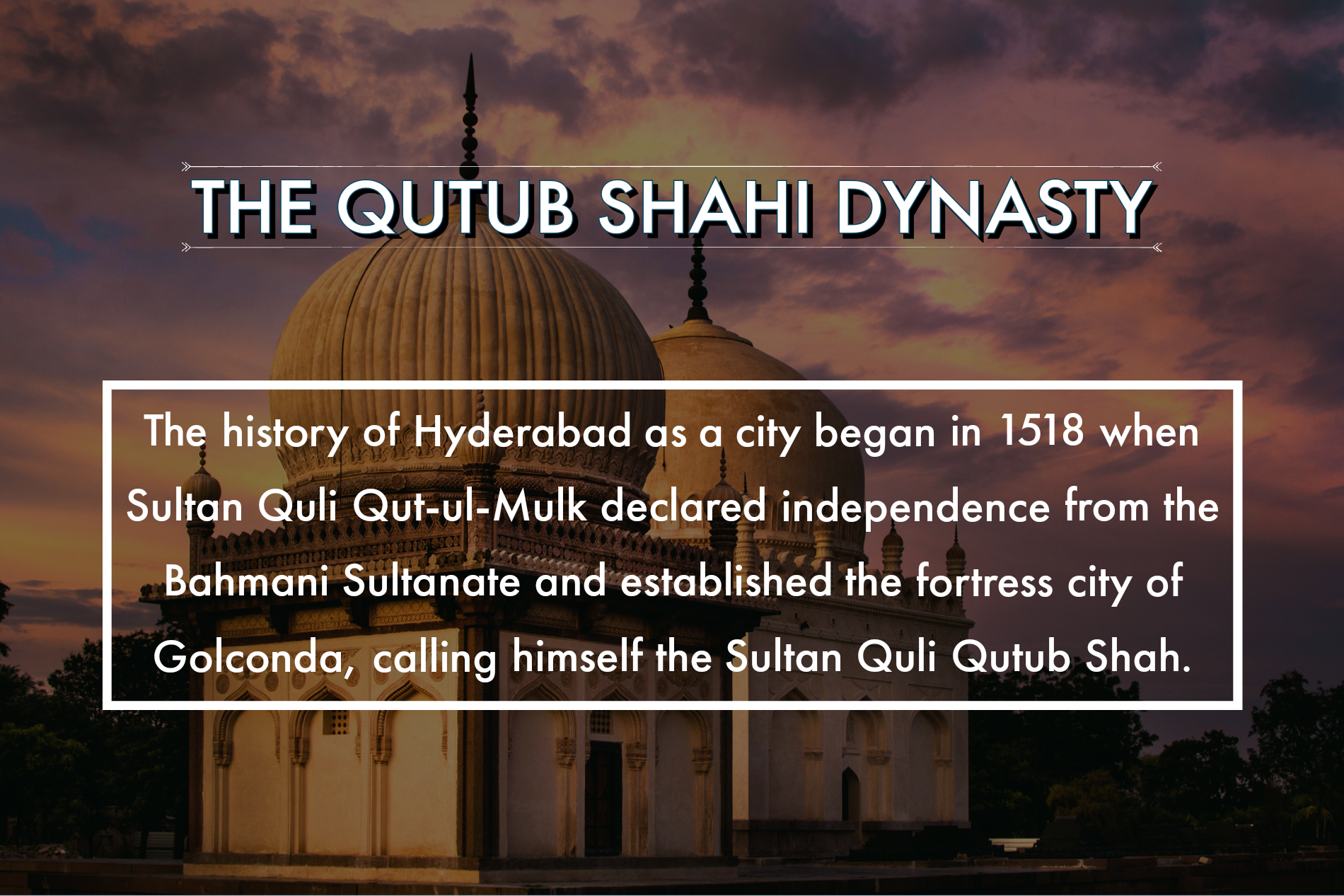
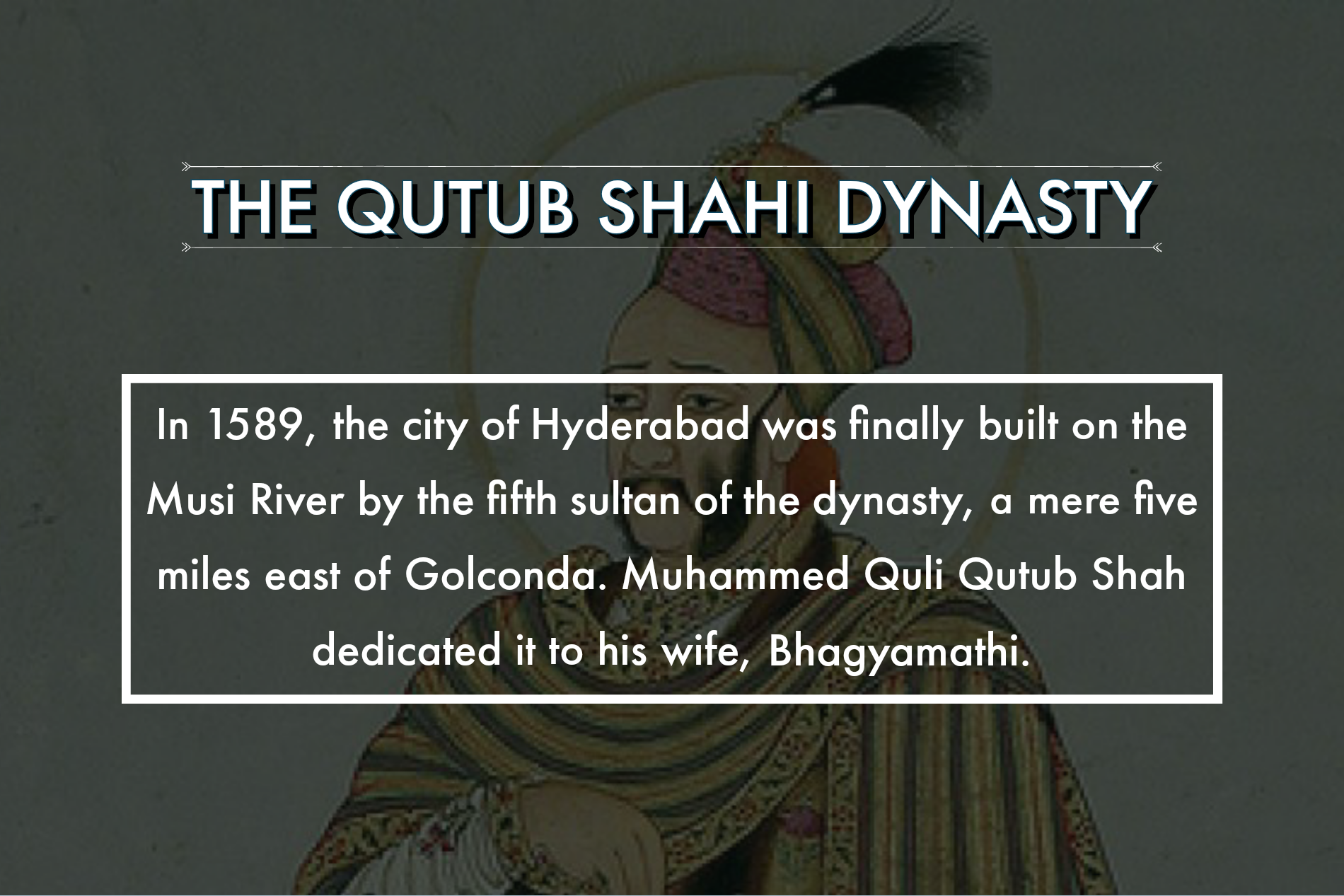
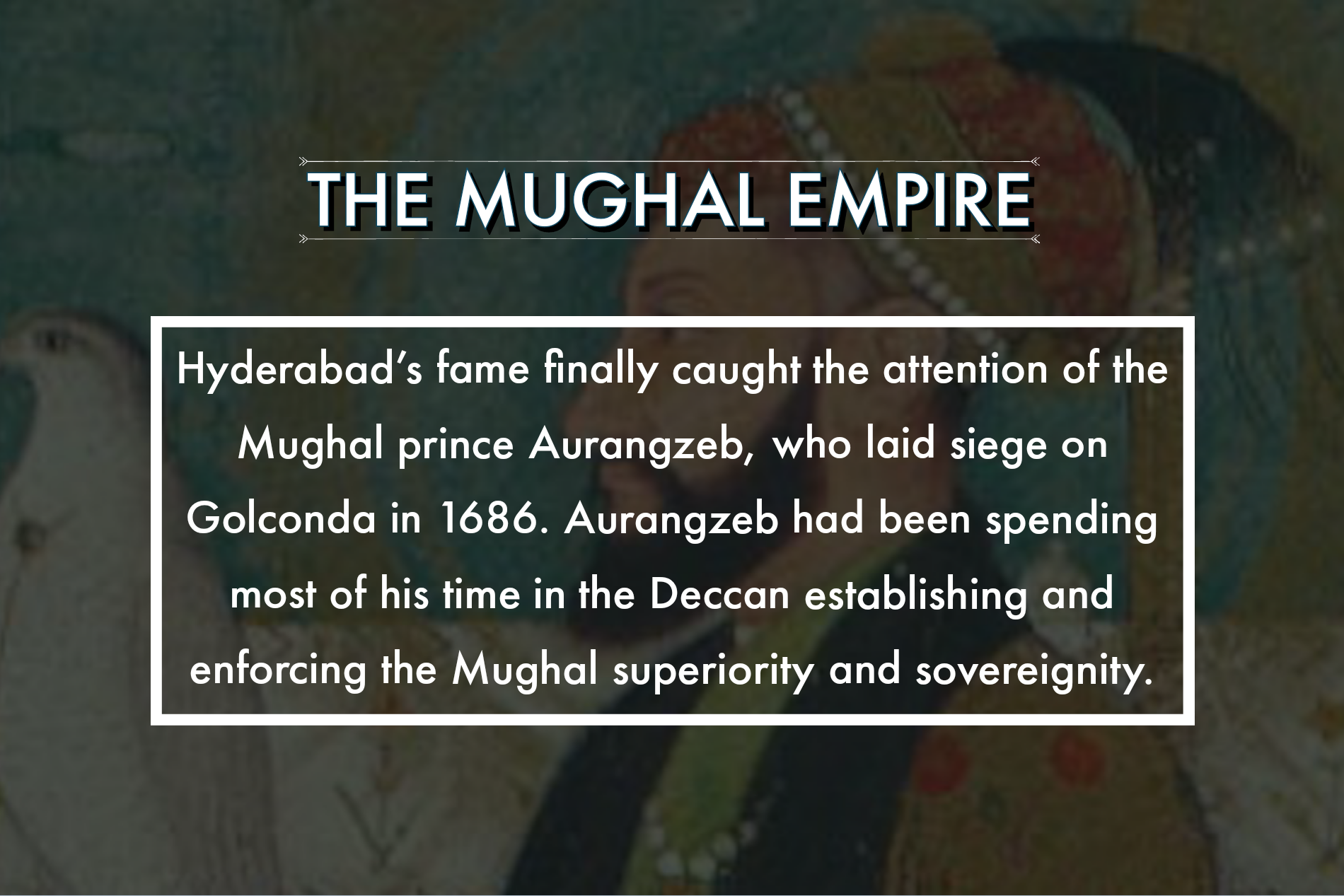
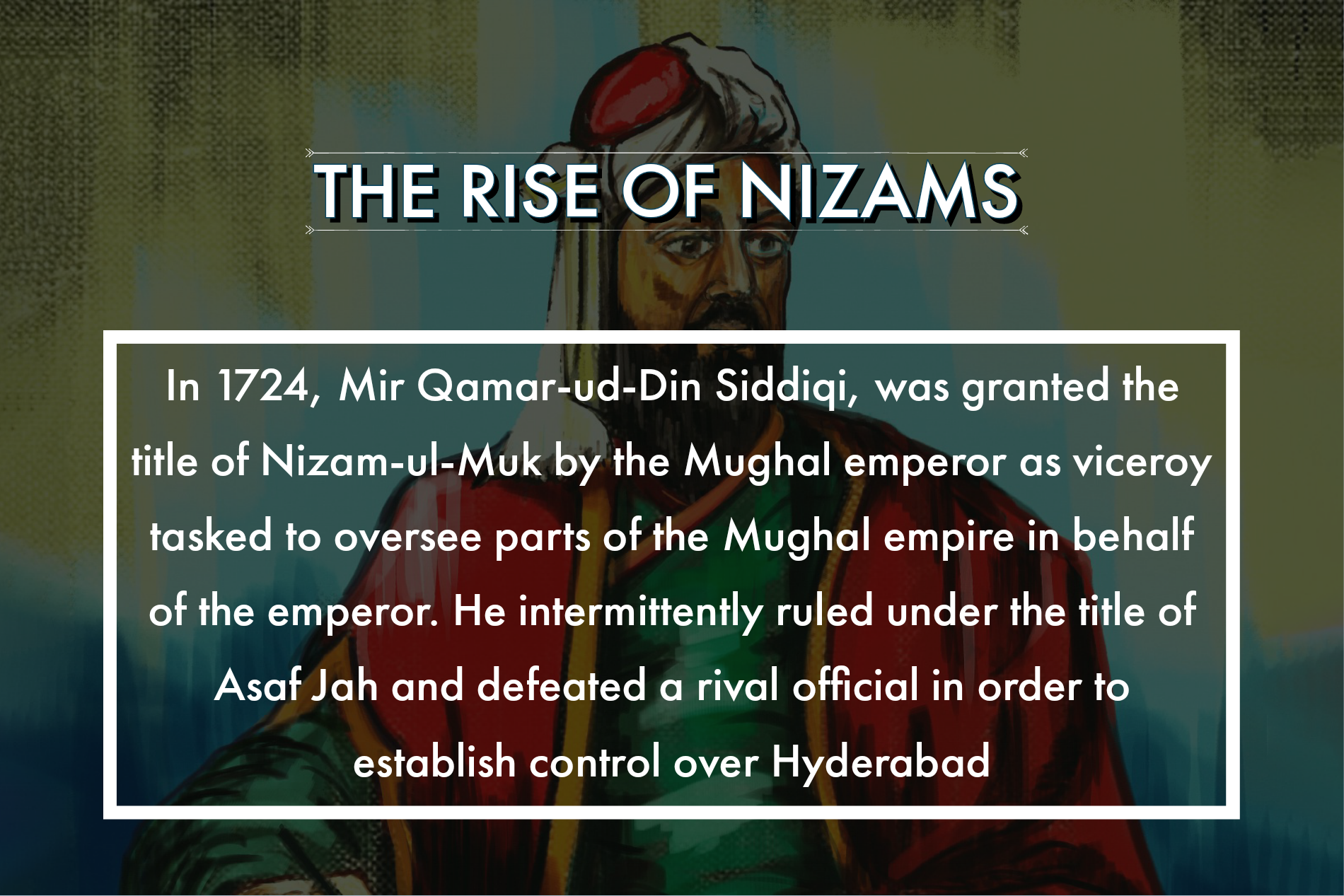
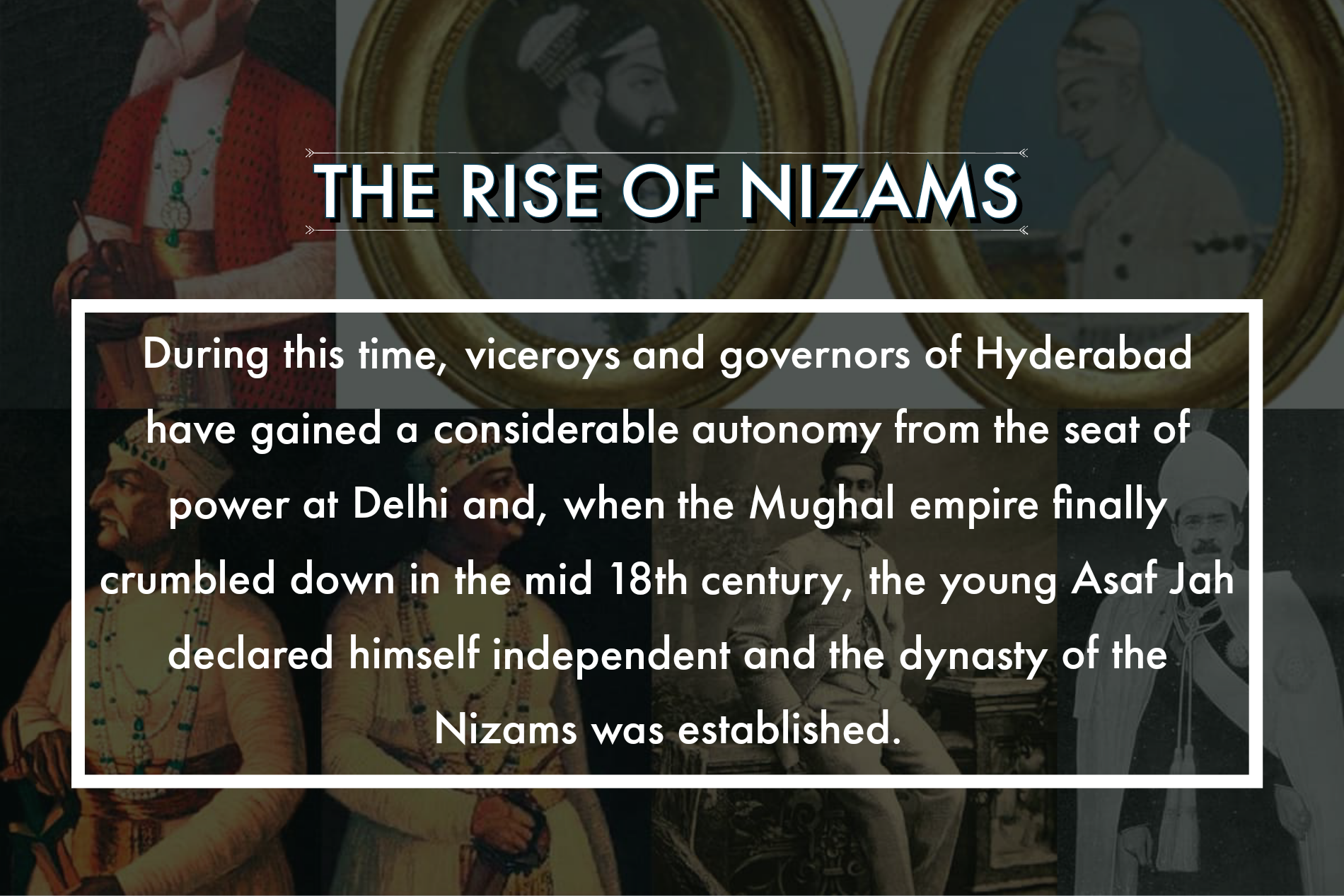
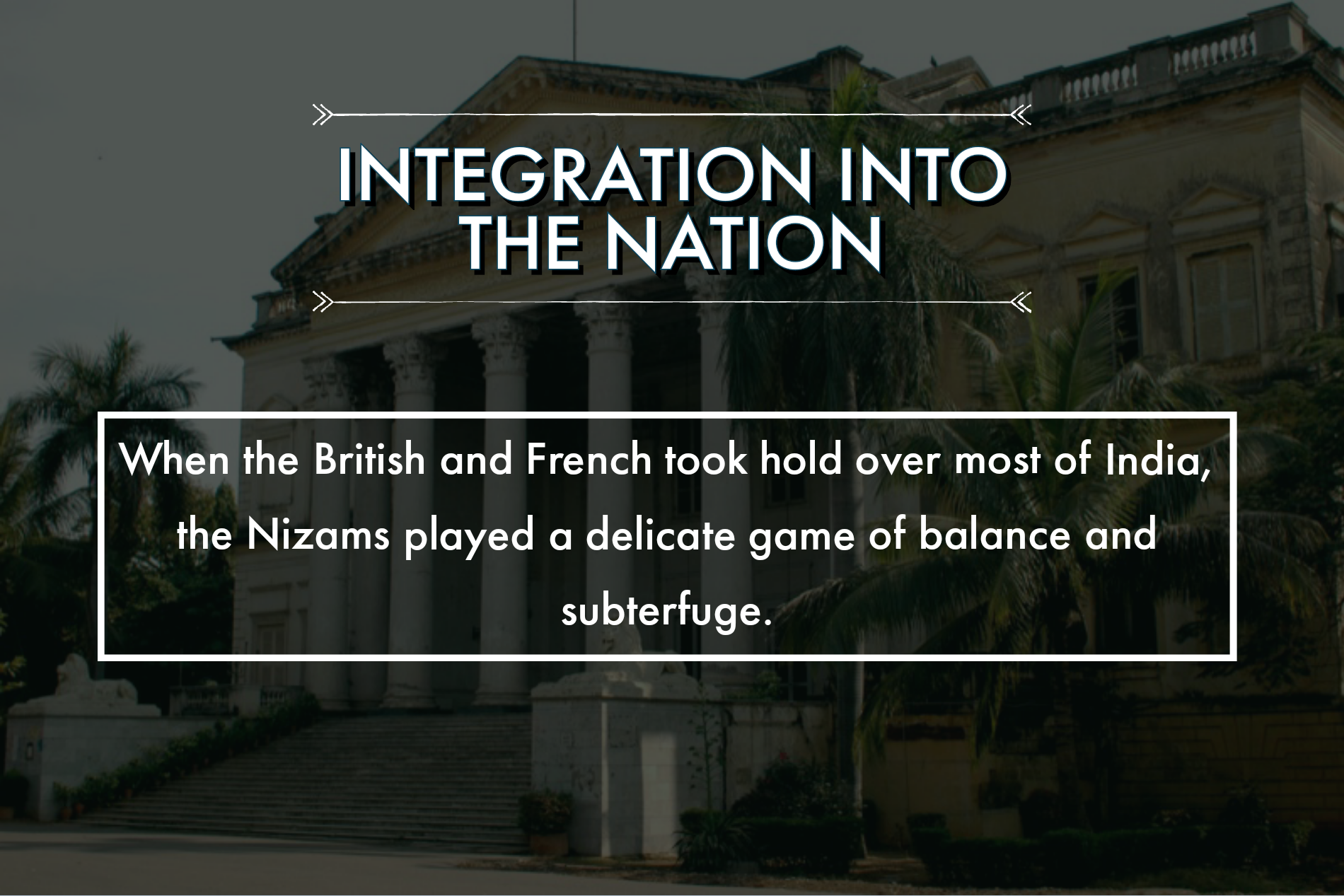
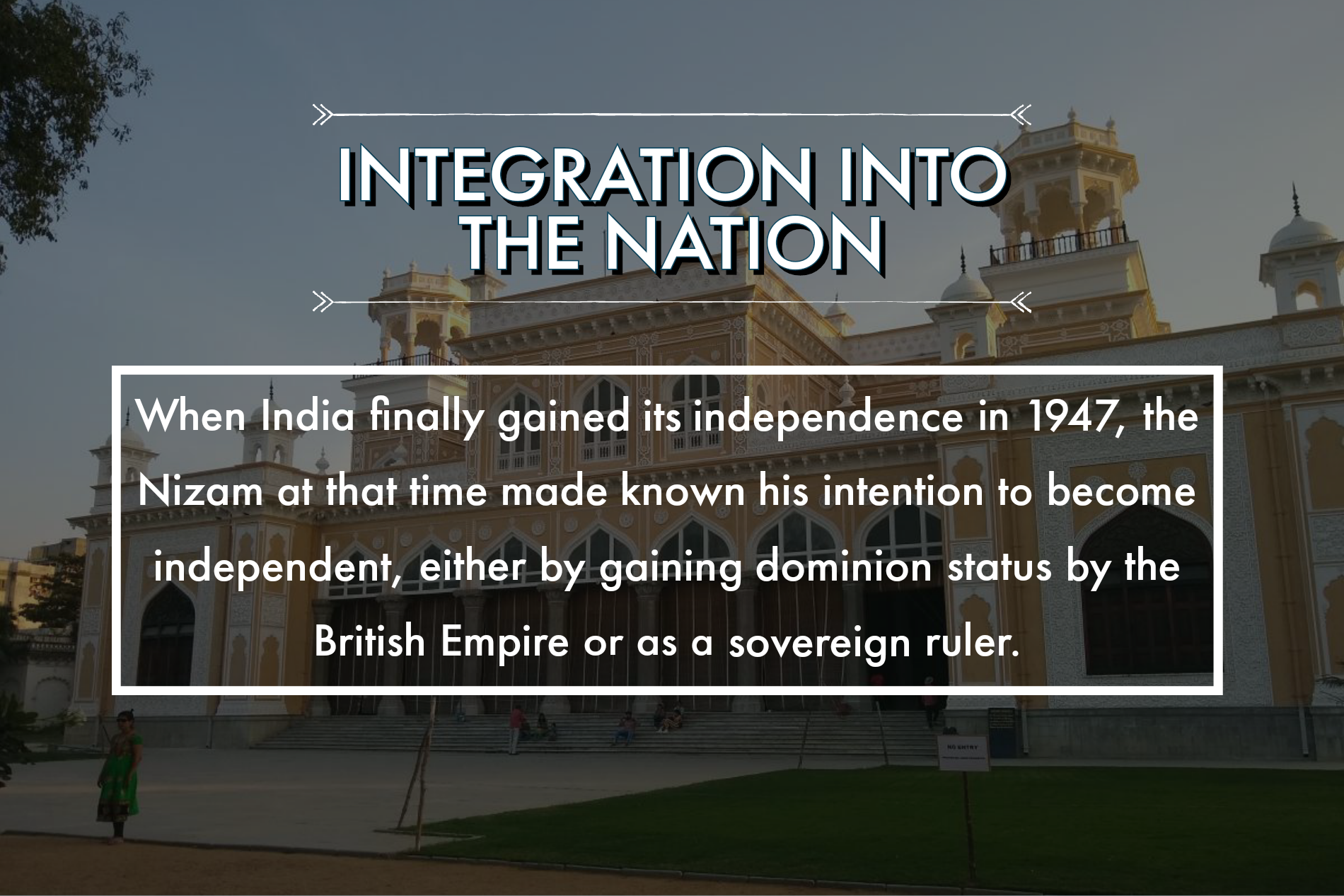
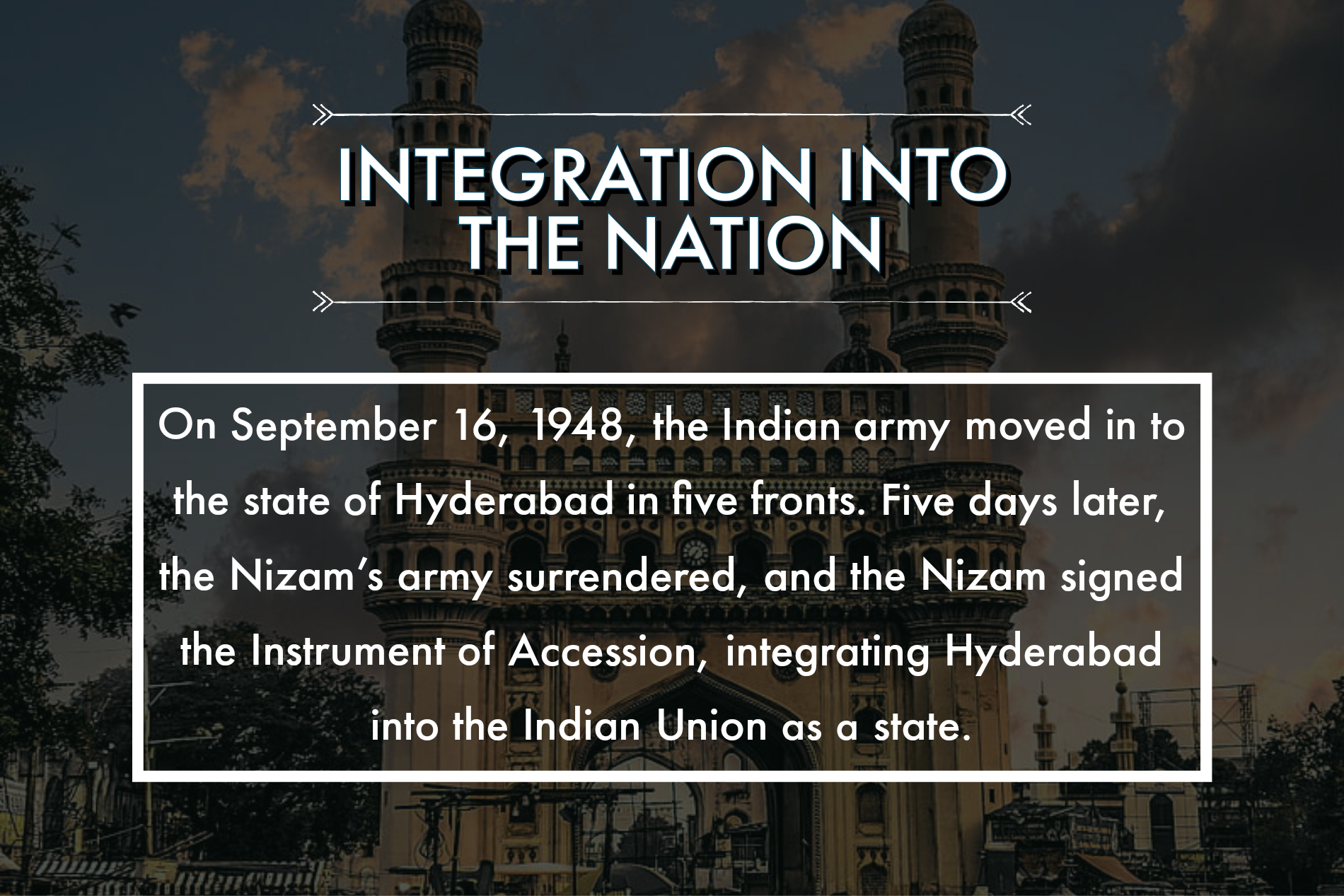
THE QUTUB SHAHI DYNASTY
The history of Hyderabad as a city began in 1518 when Sultan Quli Qut-ul-Mulk declared independence from the Bahmani Sultanate and established the fortress city of Golconda, calling himself the Sultan Quli Qutub Shah. Decades before, Sultan Mohammed Shah Bahmani instructed Quli Qut-ul-Mulk to quell insurgents and disturbance in the region, a job which the future ruler carried only too well. By the time he established the Golconda Sultanate under the title of Sultan Quli Qutub Shah and began the Qutub Shahi Dynasty, the Bahmani Sultanate had completely disintegrated, splintering into five different kingdoms.
In 1589, the city of Hyderabad was finally built on the Musi River by the fifth sultan of the dynasty, a mere five miles east of Golconda. Muhammed Quli Qutub Shah dedicated it to his wife, Bhagyamathi, and also ordered the construction of the monument of the city, which eventually became its icon, the Charminar on 1591, reportedly as a way to thank the almighty for quelling a plague before it destroyed his newly-built city. During this time and well into the 17th century, Hyderabad’s power and fame rose as it became the center of a highly successful diamond trade. All the Qutub sultans, great thinkers and builders as they were, contributed hugely to the richness of Hyderabad’s culture and affluence, attracting countless visitors from other countries who compared it to Iran’s beautiful city, Isfahan.
THE MUGHAL EMPIRE
Hyderabad’s fame finally caught the attention of the Mughal prince Aurangzeb, who laid siege on Golconda in 1686. Aurangzeb had been spending most of his time in the Deccan establishing and enforcing the Mughal superiority and sovereignity. When Shah Jahan finally died in 1666, Aurangzeb consolidated his power as Emperor and he spent most of it trying to expand his empire beyond that of his predecessor, Akbar the Great. His target was Hyderabad, at that time one of the richest cities in the area, and was reportedly impregnable because of the protection of Golconda Fort.
Aurangzeb’s initial sieges were failures and he had to leave in frustration. However, he came back and it wasn’t until a nine-month long intensive siege in 1687 when Golconda finally fell. Legend has it that the fortress would’ve held on if it wasn’t for a saboteur who was bribed by Aurangzeb to open the gates at night. Sultan Abul Hassan Tana Shah, the seventh and last king of the Qutub Shahi dynasty, was imprisoned soon after Golconda fell. Hyderabad’s importance declined, its flourishing diamond trade was destroyed, and the city fell into ruins. Aurangzeb’s attention, itself, was focused on the other parts of the Deccan shortly after, especially with the Marathas steadily gaining ground, albeit slowly, against the reigning Mughals.
THE RISE OF NIZAMS
In 1724, Mir Qamar-ud-Din Siddiqi, was granted the title of Nizam-ul-Muk (meaning Administrator of the Realm) by the Mughal emperor as viceroy tasked to oversee parts of the Mughal empire in behalf of the emperor. He intermittently ruled under the title of Asaf Jah and defeated a rival official in order to establish control over Hyderabad. During this time, viceroys and governors of Hyderabad have gained a considerable autonomy from the seat of power at Delhi and, when the Mughal empire finally crumbled down in the mid 18th century, the young Asaf Jah declared himself independent and the dynasty of the Nizams was established.
It would not take long before the Nizams quickly surpassed the Mughals in the domination of the southern parts of India, with their dominion hitting as high as 125 million acres (roughly 510,000 square kilometers). In the two centuries that the Nizams ruled over Hyderabad, there were a total of seven Nizams, excluding the 13 years where the three sons of Asaf Jah 1 ruled after him; the three sons were not officially recognized as rulers (and thus, did not get the title of Nizam). During these two centuries, Hyderabad saw immense growth again, both culturally and economically. It finally became the capital with the old one, Golconda, becoming all but abandoned.
Hyderabad’s cultural glory was again established, especially since the Nizams themselves were great patrons of literature, art, architecture, and food. The Nizams themselves were counted as among the wealthiest people in the world; in fact, the last Nizam is ranked as the fifth wealthiest people in the history of the world today, with his fortune at its highest pinned at US$225 billion, adjusted to today’s value.
INTEGRATION INTO THE NATION
When the British and French took hold over most of India, the Nizams played a delicate game of balance and subterfuge. They allied themselves with each side at different times, playing an important role in the wars involving Tipu Sultant, the French, and the British. The Nizams eventually won the friendship of the Western invaders without giving up their powers. As a result, Hyderabad was still ruled by a Nizam, and it became the largest princely state of India. As a princely state, Hyderabad had its own currency, railways, mint, and postal system. The citizens enjoyed no income tax.
When India finally gained its independence in 1947, the Nizam at that time made known his intention to become independent, either by gaining dominion status by the British Empire or as a sovereign ruler. The Nizam signed a Standstill Agreement with the Indian Union which, by this time, had surrounded him on all sides. Breakdown in law and order soon followed, with fights between the supporters of the Nizam and the supporters of Congress. As the violence spiraled out of control, the newly established Indian government initiated a police action called Operation Polo.
On September 16, 1948, the Indian army moved in to the state of Hyderabad in five fronts. Five days later, the Nizam’s army surrendered, and the Nizam signed the Instrument of Accession, integrating Hyderabad into the Indian Union as a state.